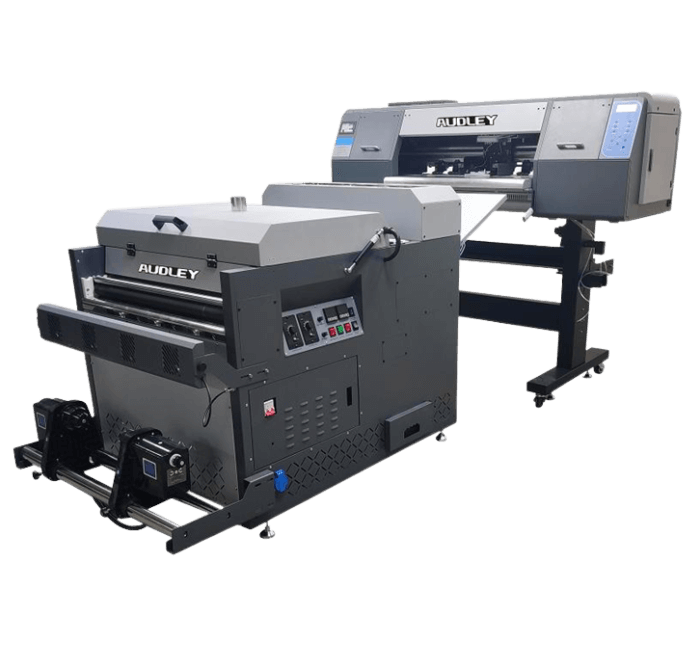Are you considering investing in a DTF printer for your printing business, but not sure which one is the best for you? With so many options available, it can be overwhelming to choose the right one. But don’t worry, I’m here to help guide you through the process.
The importance of choosing the best DTF printer for your business
Choosing the best DTF printer for your business is essential because it affects your printing quality, productivity, and overall profitability. A high-quality DTF printer will deliver professional-grade prints that meet your clients’ demands, while a low-quality DTF printer will deliver low-quality prints that may damage your reputation and lose your clients’ trust.
Moreover, a reliable and high-quality DTF printer will help increase your productivity and profitability by reducing downtime, minimizing maintenance costs, and increasing your output. On the other hand, an unreliable and low-quality DTF printer will increase your downtime, cause frequent maintenance issues, and reduce your output, leading to lost profits and clients.
Therefore, choosing the best DTF printer for your business is crucial in maintaining your quality, productivity, and profitability.
Factors to consider when choosing the best DTF printer
There are several factors to consider when choosing the best DTF printer that meets your business needs. In this blog post, we’ll explore the key factors to consider and help you make an informed decision.
Print quality and resolution
Print quality is essential for a few reasons. First, it impacts the overall visual appeal of a print. Customers expect their prints to look sharp, with accurate colors and contrast. If a print looks dull, blurry, or washed out, customers are likely to be disappointed and may not return to that business.
Second, print quality impacts the durability of a print. Higher quality prints are less likely to fade, peel, or crack over time, ensuring that the print remains looking good for longer. This is especially important for apparel printing, where the print needs to withstand multiple washes and wear and tear.
Finally, print quality can help a business stand out from the competition. In a crowded market, high-quality prints can attract attention and make a business more memorable. This can lead to increased sales and customer loyalty.
Resolution is another critical factor in print quality. It refers to the amount of detail that can be captured in a print, measured in dots per inch (DPI). The higher the DPI, the more detail that can be captured, resulting in sharper, more detailed prints.
Resolution is especially important for printing images or graphics. Low-resolution images can appear pixelated or blurry, while high-resolution images can look sharp and vibrant. Customers expect high-quality prints that accurately capture the details of their designs, and a low resolution can lead to disappointment.
Compatibility with different types of fabrics
Compatibility with different types of fabrics is crucial when purchasing a DTF printer. The ink and film used in DTF printing have unique properties that require different settings for different fabrics. If the printer is not compatible with a particular fabric, you may experience issues such as poor adhesion, color bleeding, and fading. These issues can lead to poor-quality prints, wasted time, and money.
Moreover, different fabrics have different properties, such as texture, thickness, and stretchability. These properties can affect the adhesion of the ink and film to the fabric. For example, a fabric with a rough texture may require a stronger adhesive to ensure the ink and film stick to the fabric. Likewise, a fabric that stretches may require a more flexible ink and film to prevent cracking or peeling.
Therefore, it is important to choose a DTF printer that is compatible with the fabrics you intend to print on. This will ensure that you can produce high-quality prints that meet your clients’ expectations.
Size and speed of the printer
When it comes to the size of a printer, it’s essential to think about the available space in your workplace. A large printer may not fit well in a small office, while a compact printer may not be able to handle the volume of printing needed in a larger workspace. Additionally, a larger printer may be more expensive to operate due to its size and power requirements. On the other hand, a smaller printer may be more cost-effective, but it may not be capable of handling larger print jobs.
The speed of a printer is another crucial factor to consider. The speed of a printer is measured in pages per minute (PPM), and it can vary greatly between models. A faster printer can handle larger print jobs more efficiently, which can save valuable time and increase productivity. However, a faster printer may also require more expensive ink or toner cartridges, which can impact operating costs.
When it comes to size and speed, it’s essential to find a balance that works for your business. A printer that’s too small or too slow can lead to delays and decreased productivity, while a printer that’s too large or too fast can be costly and inefficient. By considering your specific printing needs, you can find a printer that’s the right size and speed for your business.
So, how do you determine the right size and speed for your printing needs? One way is to consider the volume of printing your business does on a daily, weekly, or monthly basis. This can help you determine the capacity and speed of the printer you need. Additionally, you may want to consider the types of documents or materials you’ll be printing. For example, if you’ll be printing high-quality images or graphics, you may need a printer with a higher resolution and color accuracy.
Cost considerations
First and foremost, it’s important to understand that the cost of a DTF printer can vary based on several factors. These factors include the brand, model, size, and features of the printer. Additionally, some printers may require additional equipment, such as a heat press or conveyor dryer, which can add to the overall cost. When considering the cost of a DTF printer, it’s important to research and compare different models and brands to find the best fit for your business needs and budget.
So, how much can you expect to pay for a DTF printer? According to Printful, a leading print-on-demand and dropshipping company, the cost of a DTF printer can range from $3,000 to $20,000 or more. This cost can vary based on the features and capabilities of the printer. For example, a smaller, entry-level DTF printer may cost around $3,000, while a larger, more advanced model with additional features may cost upwards of $20,000.
Top DTF printers in the market
There are several brands of DTF printers on the market, but some of the most popular and reputable ones include:
- Epson
- Mimaki
- Mutoh
- Ricoh
- Roland
- Brother
- Kornit
- Audley
Each of these brands has its own strengths and weaknesses, and it’s important to compare their features and technical specifications to determine which one will best meet your needs.
Comparison of features and technical specifications
- Epson:
Pros:
– High image quality for printing fine details and vibrant colors
– Wide range of printers available, from low-cost models to high-end professional machines
– Compatibility with a variety of printing substrates, including non-traditional materials like textiles and ceramics
– Innovative technology like PrecisionCore printheads for faster, more efficient printing
– eco-friendly printing options available
Cons:
– Epson inks can be expensive
– Printers can be delicate and require careful maintenance
– Limited ink colors available, compared to some other brands
- Mimaki:
Pros:
– Advanced technology for high-quality printing and accurate color reproduction
– Wide range of printers available for various applications, including textile and industrial printing
– Large-format printers available for oversized prints
– Innovative features like UV-LED curing for faster drying and reduced energy consumption
Cons:
– Mimaki printers can be expensive
– Limited availability in some regions
– Some users have reported issues with ink clogging in certain models
- Mutoh:
Pros:
– High-quality printing for both indoor and outdoor use
– Wide range of printer sizes and models available for various applications
– Advanced technology like Smart Printing and DropMaster for improved print quality and easier maintenance
– eco-friendly printing options available
Cons:
– Mutoh inks can be expensive
– Some users have reported issues with printhead clogs and ink consumption
– Limited distribution and service channels in some regions
- Ricoh:
Pros:
– High-quality printing with accurate color reproduction
– Wide range of printer sizes and models available for various applications
– Innovative technology like Ricoh’s own Piezo printhead and White ink options
– eco-friendly printing options available
Cons:
– Ricoh inks can be expensive
– Some users have reported issues with printhead clogs, particularly with White ink
– Printers can be complex and require training and experience to operate effectively
- Roland:
Pros:
– High-quality printing with vibrant color reproduction and fine detail
– Wide range of printers available for various applications, including textile and industrial printing
– Innovative technology like Roland’s own Printhead Nozzle Cleaning Systems for easier maintenance
– Responsive customer service and support
Cons:
– Roland printers can be expensive
– Printers can be complex and require training and experience to operate effectively
– Limited ink color options available
- Brother:
Pros:
– Low-cost options available for small businesses and personal use
– Wide range of printers and all-in-one options available for various applications
– Minimal maintenance required compared to some other brands
– Easy to use and reliable
Cons:
– Lower print quality compared to some other brands
– Limited media compatibility for printing on non-traditional materials
– Not as widely used in professional printing applications
- Kornit:
Pros:
– High-quality direct-to-garment printing for textiles
– Innovative technology like Kornit’s patented NeoPigment ink for better colorfastness and reduced environmental impact
– Large printing area available for oversized prints
– User-friendly software for easy operation
Cons:
– Kornit printers can be expensive
– Limited to textile printing applications
– Some users have reported issues with ink clogging and required maintenance
Pros:
– High-quality printing with vibrant color reproduction and fine detail
– Low-cost options available for small businesses and personal use
– Wide range of printer sizes and models available for various applications
– User-friendly software and operation
– Responsive customer service and support
Cons:
– Not as well-known as big international brands
– Limited availability and service channels in some regions
– Limited media compatibility for printing on non-traditional materials.
Evaluating your printing needs
Before you start researching DTF printers, it’s important to understand your business requirements. What type of garments do you typically print on? How many prints do you need to produce per day? What is your budget for a new printer?
Answering these questions will help you narrow down your options and choose a printer that meets your specific needs. For example, if you need to print on a variety of fabrics, you’ll want to choose a printer that can handle different types of films and powders. If you’re printing high volumes, you’ll need a printer with a fast printing speed and a large ink capacity.
Additionally, you’ll want to consider the size and space requirements of the printer. Do you have enough room in your workspace to accommodate a large printer? Will you need to purchase additional equipment, such as a heat press or powder shaker?
Once you’ve identified your business requirements, it’s time to start researching DTF printers in combination with the key factors mentioned above.
Conclusion
After reading through this comprehensive post, we hope that you have a better understanding of the importance of choosing the best DTF printer for your printing business. As we discussed, the right DTF printer can make all the difference in producing high-quality prints that meet your customers’ expectations.
Remember to consider the factors we outlined when choosing the best DTF printer for your business, such as print quality, speed, and cost. We also provided a list of top DTF printers in the market to help you get started in your research.
So, how can you choose the best DTF printer for your printing business? It all comes down to evaluating your printing needs and finding a printer that meets them. Don’t hesitate to contact us and send your purchase requirements. We are here to help you make the best decision for your business and ensure your success in the printing industry.





